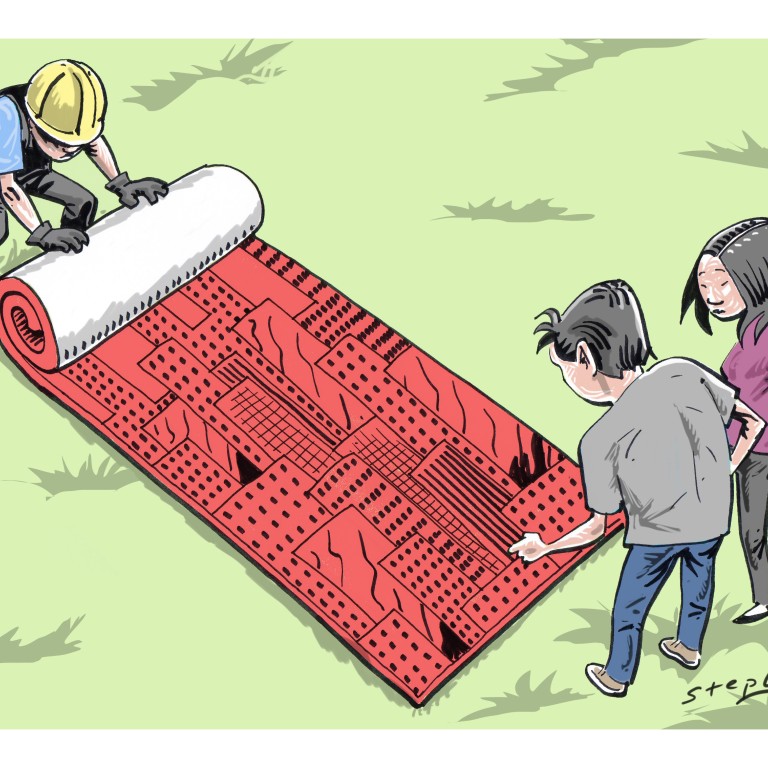
For China's city planners, people-centred growth is no urban myth
Winston Mok says China's latest urbanisation plan shows a balance of focus across different regions - and it's up to each pilot zone to turn it into growth that truly answers people's needs
While the three new free trade zones have captured a lot of attention of late, a broader experiment is unfolding with potentially far greater impact.
Beijing has just designated 64 pilot zones - ranging from provinces to districts - for urbanisation. From the selection of these zones, it's possible to glimpse the probable pattern of China's future urban development.
First, the coastal region will continue to be a key driver for urbanisation. Cities like Dalian , Qingdao and Ningbo are on the list while Jiangsu , with the second-largest economy after Guangdong, is one of two provinces selected. The large city of Suzhou has become a magnet for migrant workers.
Besides its large cities, Jiangsu also has some of the strongest small, county-level cities in China. That makes it capable of integrating people - from both inside and outside the province. Already the most urbanised region of China, the coastal area will go from strength to strength.
Second, the Yangtze economic belt - a key development priority for Beijing - will be a vital new engine for China's urbanisation. The belt cities of Wuhan , Changsha and Chongqing are on the list. Anhui is the other province designated as a pilot zone.
China's most important cities away from the coast are on the belt, and with recent economic development inland, many migrant workers have been returning home.
Third, the second tier of large cities, after the big four of Shanghai, Beijing, Guangzhou and Shenzhen, can carry the load for the next phase of urban growth. With populations from five to 10 million, many of these second-tier cities are on the list, including Dalian, Qingdao, Wuhan and Changsha. Many young graduates are drawn to these second-tier cities that offer a better work-life balance than the big four, which are only for the very ambitious.
Next, "smaller" cities connected to provincial capitals will also represent important growth opportunities. Dongguan and Huizhou , next to Guangzhou, are targeted, as are Ningbo and Jiaxing , neighbouring Hangzhou .
Some are not actually that small; Dongguan's population, for instance, is more than eight million. Well-connected through transport networks to provincial capitals, these "satellite cities" can take some of the burden of growth with their space and cost advantages.
Finally, the mega cities will continue to be important for urban growth. All four are on the list, but for three of them, only an outlying district is involved. The aim is clearly to contain growth in their urban cores. The only exception is Guangzhou, where the entire city is included, a sign that it is seen as better equipped to absorb growth with its good urban design.
With excess housing supply and therefore cheaper homes amid the current downturn, now is a good time to promote people-oriented urbanisation. Local governments are motivated to draw in new migrants to take up the excess housing inventory. They should come up with innovative schemes to attract educated professionals and new graduates. Now, with lower opportunity costs for land, they can negotiate with Beijing to get subsidies to build social housing.
Beyond good-value housing and job opportunities, people will also look to see what other benefits a city offers. Dalian and Qingdao have the edge in terms of attractive climate and living environment. Wuhan and Chongqing promise significant economic growth. Suzhou and Ningbo offer an excellent commercial environment.
People want clean air; here, the Pearl River and Yangtze River deltas have the lead. But others can emulate them. People will also assess the quality of local schools and hospitals.
Most importantly, people will be drawn to cities with good governance, where their rights are protected by the rule of law.
In the past, cities competed for investment to generate economic growth. Such growth was sometimes at odds with the interests of the people (pollution or underinvestment in social services, for example). They will need to do things differently, and seek to achieve growth by creating attractive places to live and work.
By including performance-based incentives for the pilot zones, Beijing can make new migrants assets rather than liabilities. Cities can obtain subsidies by providing social housing, health care and education to new migrants.
Beijing is guiding the direction of China's urbanisation through these pilot zones. But the regions will take the initiative. People will ultimately decide where they want to settle. As much as cities set the bar for who they welcome, people will choose based on their needs and preferences. A new round of competition for people-based economic growth is beginning.

